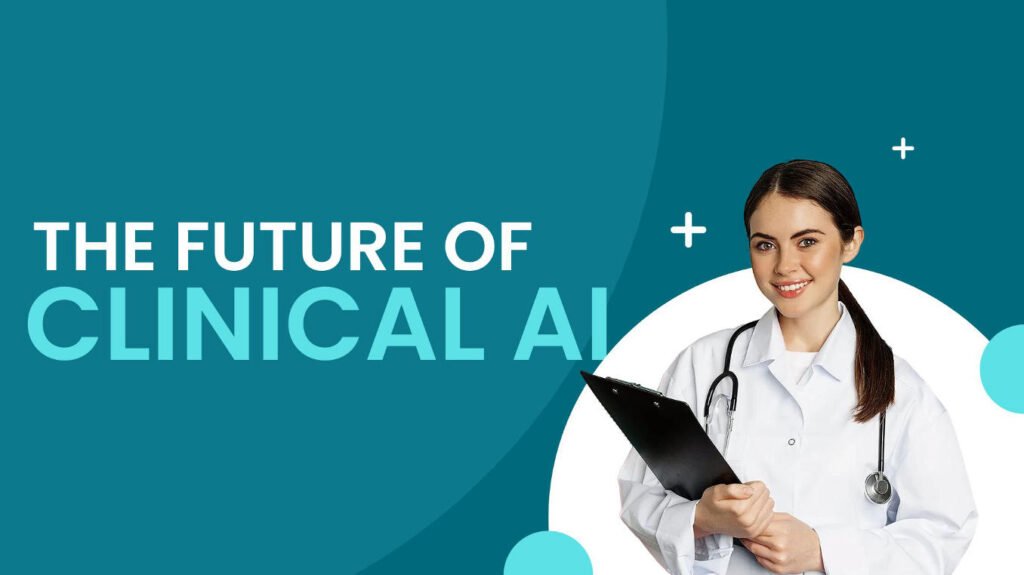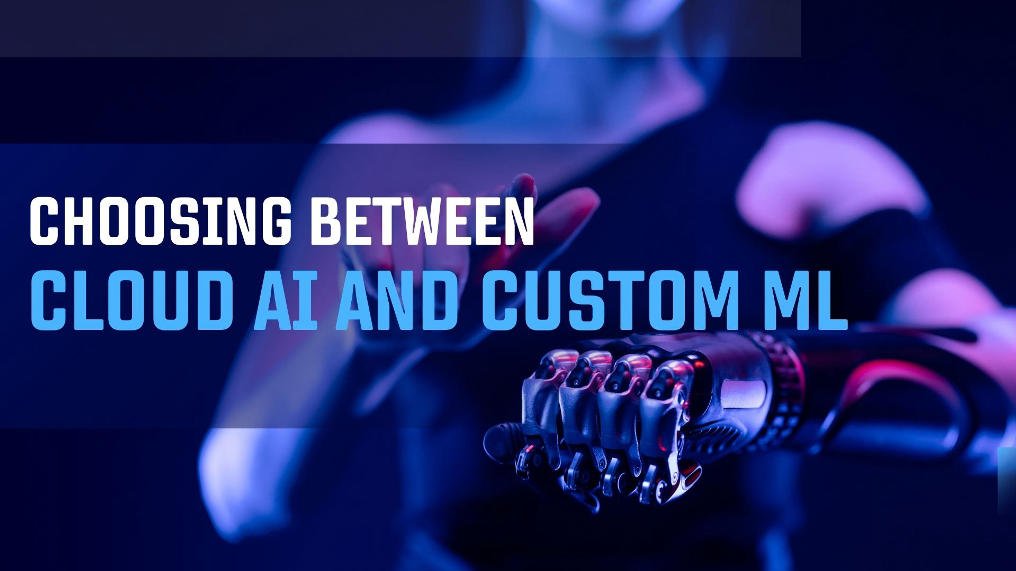Today, machine learning (ML) is more than just a buzzword in healthcare and medicine—it’s transforming the way hospitals, labs, and clinical research teams work. ML is fueling real-world change from diagnosing diseases to managing patient care. But when we’re talking about highly regulated clinical settings, things get messy.
Developing ML for hospital and clinical needs reliability, transparency, and compliance. It’s not about coding an excellent model — it’s about that model being compliant, ethical and operational. That’s when machine learning consulting becomes vital. Specialised advisors guide health care organisations through data privacy laws, compliance requirements and tech infrastructure.
And we’re going to highlight how healthcare teams and clinical organisations can create trustworthy ML pipelines, what obstacles they have to overcome, and how professional services such as RPA implementation companies can help get them there.
A Few Reasons Why Sound ML Pipelines for Healthcare Are Important
Consider a hospital employing an AI-based system to catch early symptoms of sepsis. If it misclassifies a patient, the results are potentially deadly. That’s why every model in health care must be validated, monitored and governed.
A recent study found that while AI has penetrated more than 1,000 FDA-approved medical devices, around 70% of these are limited to the field of radiology — providing evidence for just how narrow deployment still is in healthcare applications.
Meanwhile, Dataversity reports that only 30% of healthcare organisations have moved AI projects from the lab to production, while 63% report that data quality is their biggest barrier.
That’s where machine learning consulting comes in — helping teams move past proofs of concept to develop reliable, audit-ready ML systems that work as intended (in the real world).
The Regulatory Challenge
Healthcare is heavily regulated by laws such as HIPAA, GDPR and Good Clinical Practice (GCP). These provide patient protections for privacy, security and safety — but they also add complexity to getting AI into the field.
An ML pipeline in a clinical enterprise must ensure that:
- Data provenance – Each record and transformation has to be traceable.
- Validation and compliance – The solution should fit into a framework such as the FDA or EMA guidance.
- Explainability – Clinicians need to know why a model came to make a given decision.
In a PubMed study, we discovered that most clinical research organisations still do not operate at a mature MLOps level to ensure compliance; only the fringe few even bake regulatory supervision into their ML pipelines.
That’s why you often find healthcare professionals looking for ML consulting for healthcare and AI compliance consulting at the onset of the project – so they can develop systems that adhere to these regulations from day one.
Anatomy of a Dependable ML Pipeline
A trustworthy ML pipeline isn’t developed with a snap of the fingers. It’s a pipeline, leading data to algorithms, monitoring and governance in one smooth flow. Let’s break it down step-by-step.
1. Data Ingestion & Governance
If you get to health issues, the data is even more sensitive. Hospitals have EHRs, medical images, lab results and wearable sensor data – all of which must remain private and traceable.
Adoption of Healthcare Data Automation Services or the best RPA in healthcare enables data to be collected accurately and in-time, and adheres to the necessary compliances. These systems automate standardised tasks such as data entry or report creation and also produce an audit trail.
2. Data Preparation & Feature Engineering
How and why is raw clinical data messy — that means missing values, inconsistent formatting, and duplicate entries. The authors of one study from the Journal of Medical Internet Research concluded that preprocessing variations within EHR pipelines could cause model predictions to vary by more than 40%.
Strong ML pipeline development services therefore prioritise things like standardisation of data, versioning, and lowering biases around the data before training on any model.
3. Model Development & Validation
This is a place where algorithms are made. But in health care, it isn’t sufficient for a model to do well in training — it must generalise across diverse hospitals, patient populations and devices.
Hire ML experts for healthcare who can make sure the models are explainable and validated outside. For example, one radiology study found that the AUC dropped from 98.4% to 95.4% when it was applied to a new dataset — evidence of the critical importance of real-world validation.
4. Deployment & Monitoring
Once models are trained, they are deployed into hospital workflows — for example, by incorporating predictions into electronic health record (EHR) systems.
In this case, RPA players like implementation companies and Agentic AI Services and Solutions assist in mainly automating daily monitoring such as drift detection, version tracking, and also retraining alerts.
5. Governance & Documentation
Every step — from where data came from to updating models — must be documented for compliance. A solid governance framework includes:
- Complete audit trails on all data and model versions
- Access control logs
- Change management and version control
- Validation reports
This organised documentation is what makes a promising prototype a regulation-ready ML system.
What are the Best Practices for Trustworthy Clinical ML Pipelines
Here are some pragmatic best practices to establish predictable machine learning pipelines that are reliable and safe for use in healthcare:
- Work with clinicians from the start – They understand the context and validate findings.
- Be transparent – Try to deploy explainable AI (XAI) tools to explain the possible predictions.
- They should embrace continuous monitoring – Configure alerts for model drift and data anomalies.
- Leverage federated learning – If patient data can’t be shared, train models locally then aggregate them securely.
- Cybersecurity should be built from day one – Encryption, access control, and privacy audits should be the default.
- Comply with regulations – Make sure to comply with the FDA AI/ML SaMD Action Plan and relevant local data protection legislation.
A recent paper highlighted that only 9% of FDA-approved AI healthcare tools have post-deployment monitoring factored in – further evidence that governance can’t stop after the development has finished.
How Automation and AI Services Can Increase Reliability
Automation everywhere Solid ML pipelines are heavily automated, not just in model training but across all lifecycles.
For instance, Healthcare Data Automation Services can automate the validation of data consistency and missing records tags to ensure clean datasets for retraining. In the same way, when combined with the best RPA software for healthcare, it automates manual, repetitive tasks like patient record updates or report creation.
Meanwhile, Agentic AI Services and Solutions make for more flexible automation. These systems can make context-based decisions, identify workflow inefficiencies and assist health professionals without transgressing compliance limitations.
Pairing it with Healthcare AI development services allows companies to achieve a potent combination of intelligence, scalability and security – all while playing by the rules.
Measuring Success: The Metrics That Matter
There has been a lot of news lately on machines outperforming humans in nearby fields, like computer vision and voice recognition. Here are some of the key metrics must watch:
- Clinical Impact – Are the outcomes better for the patient’s needs?
- Model Stability – It means how frequently does the model need to be retrained?
- Data quality – What is the completeness and consistency percentage?
- Health of compliance – Are all changes auditable and documented?
- Efficiency of operations – What are the time and cost savings in automation?
Some healthcare organisations with ML pipelines in place are achieving this, as well as up to a 40 per cent reduction in training cost and model drift decreases of 65%, demonstrating the ROI of implementing a standardised MLOps approach.
How to Choose the Right Partners
Healthcare is not an industry where companies rarely build everything in-house. Picking the right partners can make or break your ML pipeline project.
Here’s who you might need:
- A strategy, design and architecture partner for machine learning consulting.
- A clinical ML deployment company for integrating AI models in workflows.
- A website design company in USA to develop and test compliant clinician Dashboards/Interfaces.
- A company that helps customers implement RPA to automate data-heavy tasks such as claims processing.
- An AI compliance consulting team that handles audits, documentation and change control.
These partnerships help to ensure the end system is not only technically appropriate, but it’s compliant, scalable and future-proof.
Implementation Roadmap: From ML Pipeline Design to Deployment in Healthcare
Here’s an easy template to follow:
- Plan – Determine your use case, data sources and compliance restrictions.
- Prepare Data – Ingest and clean the data with the top healthcare software or via RPA.
- Develop & Validate – Model training and testing assistance from ML pipeline development solutions.
- Roll out – Introduce to your hospitals and track performance.
- Govern- Retain and train with robust audit logging and policy-based retraining.
- Evolve – Improve models as data and regulations change
There is professional help to be found in every phase — from working with a machine learning consulting firm or custom ML pipeline solutions provider.
Final Thoughts
Healthcare is one of the most promising yet challenging industries for machine learning. A reliable ML pipeline is not only a technical asset — it’s also a compliance framework, an automation engine, and a facilitator of clinical decisions all baked into one.
Through machine learning consulting, departing with the ideal Agentic AI Services and Solutions provider, as well as using a best-fit RPA solution for healthcare, companies can make sure that their ML systems are not just powerful, but also secure, ethically constructed – and future-proof.
With transparent governance, automation and a focus on compliance-first design, the ability to build regulated AI systems is no longer an aspirational vision — it’s a new norm for every hospital, lab and clinical research team.



